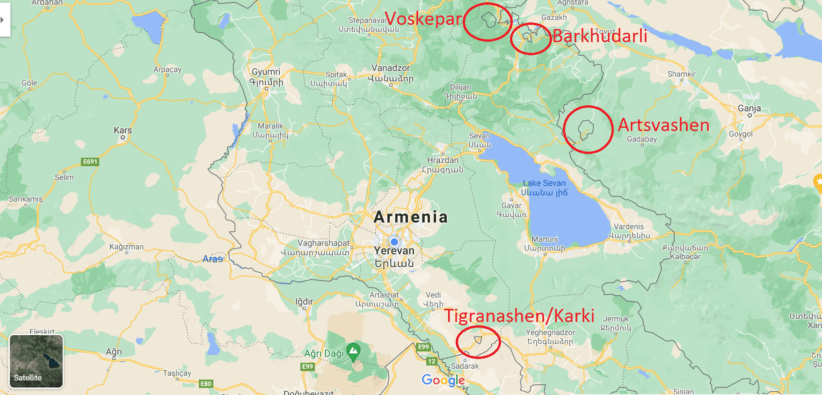By Syuzanna Petrosyan
Armenia and Azerbaijan are beginning the process of border demarcation and delimitation, Acting Prime Minister of Armenia Nikol Pashinyan announced during a special meeting of the National Assembly on Thursday.
Armenia and Azerbaijan (as well as Armenia and Georgia) did not demarcate their borders after the collapse of the Soviet Union in 1991. In Soviet times, these borders were internal and thus did not have to be defined.
In this process of demarcation, the most problematic issue for Armenia is the fate of the small enclaves. Three Soviet Azerbaijani enclaves – Voskepar and Barkhudarly in Armenia’s northeast and Karki in the south – remained under the control of Armenia after the collapse of the Soviet Union. Meanwhile, Soviet Armenia’s Artsvashen enclave came under Azerbaijani control.
Also Watch: Borders, Negotiations and Responsibilities
Voskepar and Karki are of strategic importance for Armenia: vital interstate highways connecting Armenia with Georgia and Iran pass through these territories.
In a parliament session on Thursday, Pashinyan said that as a result of the First Karabakh war, more than 70 square kilometers of Soviet Armenia remained in Azerbaijan. He noted that both Armenia and Azerbaijan control territories that internationally belong to the other side.
“Since the 1990s, there have been combat positions of the Azerbaijani Armed Forces, which are located on the [former] territory of Soviet Armenia. And we have the opposite situation,” Pashinyan said.
According to the acting prime minister, there are various ways to solve the problem. For example, he said, “we can fix the existing situation by a state border,” implying that Azerbaijani enclaves inside Armenia remain in Armenia and Armenian enclaves inside Azerbaijan remain there. This would solve Armenia’s transportation issue to Georgia and Iran.
Also Read: Has Azerbaijan Crossed Armenia’s Red Line?
In a televised interview on Thursday, Armenia’s Secretary of the Security Council Armen Grigoryan said that a new Armenia-Azerbaijan-Russia trilateral working group will be created, which will finally determine the country’s borders. Grigoryan did not rule out a return to Soviet era borders, but stressed that everything will be resolved through negotiations.
A return to Soviet era borders would mean that the three Azerbaijani enclaves will become part of Azerbaijan, while Armenia will gain control over its Artsvashen enclave on its eastern border.
“While Artsvashen has no strategic significance for Armenia and Azerbaijan, the Azerbaijani enclaves of Voskepar and Karki currently inside Armenia are of strategic economic importance – Armenia’s roads to Georgia and Iran pass through them. Nonetheless, Azerbaijan might demand the return of these enclaves to place additional diplomatic and economic pressure on Armenia,” says Karen Harutyunyan, CivilNet’s editor-in-chief.
“No one can say now what the agreement will be,” Armen Grigoryan said, hinting that these negotiations may last for years.
…
Earlier this month, Pashinyan resigned from his post as prime minister to trigger snap parliamentary elections as envisaged by the constitution. He will remain as acting prime minister until a new government is formed following June 20 elections.
















